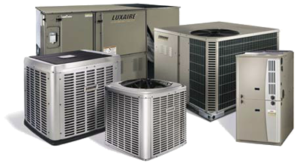When replacing your HVAC unit, the brand you choose though important, is not as much of a priority compared to the company that you hire for the installation work. Before you come to the point of replacement, it helps to learn the differences between the top HVAC manufacturers.
Most HVAC replacements are usually unplanned and more of emergencies. For this reason, getting the right model, size, and brand can be a big decision that needs to be undertaken quickly. Here is how you should go about it.
The Decision to Replace
Take time and ask yourself why a replacement. Reasons may vary with some homeowners considering what the service tech told them about the usefulness of the existing unit. When you see the repair costs ballooning out of proportion, you may want to get a new unit to help you tame such frequent repair expenses. Most HVAC units have a lifespan of around 15 years and as you approach this timeline, the decision to replace must be visited oftentimes.
Picking the Best Manufacturer
Most Americans have brands burned into their psyche. Most of the time, they start with the brand and then look for the dealer or retailer around them. When it comes to HVAC units, the dealers are usually the manufacturers. Presently, there are approximately 6 HVAC manufacturers in the United States. Each of these manufacturers has a number of brands under them amounting to about 150 brand names in total. The following are some brands that come off the same manufacturing facility.
- Lennox, Armstrong, and Concord
- American Standard and Trane
- Bryant, Carrier, Payne, and Tempstar
- Amana and Goodman
- Coleman, York, and Lux
The difference between the brands may just be the labels, paint, and marketing. What makes this even more interesting is the fact that a majority of the components are made by fewer companies including Honeywell, Johnson Controls, and Emerson.
Being huge conglomerates, most of these companies utilize rigid quality processes that bring together multimillion dollar machines for nearly mistake-proof products. The differences are therefore minimal especially on the very top end products. You may find that some of the products have a bigger touchscreen thermostat or the efficiency level as a percentage may differ by 0.1 points.
HVAC Installation
There being minimal differences in functionality, the gamechanger when it comes to HVAC brands is the installation contractor you pick. The HVAC contractor basically puts together your heating and cooling components and ensures they are setup correctly. When choosing contractors, read reviews to see what other homeowners are saying about them and also check their licensing and certifications to determine their fitness for the job. In this way, you can be assured of a real deal in your HVAC replacement exercise.





